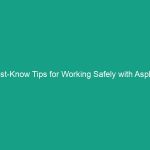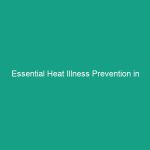Good Morning Team!
Today, we’re diving into a crucial topic that has become increasingly relevant in our digitally connected world: Must-Know Remote Meeting Security Guidelines to Protect Your Team. As we continue to adapt to hybrid work models, understanding how to securely conduct remote meetings is vital for protecting not only our sensitive information but also the integrity of our projects and the Safety of our team members.
Understanding Remote Meeting Security Guidelines
Remote meeting security guidelines encompass a range of practices designed to safeguard our online interactions. With the rise of remote work, it’s essential to be aware of the potential risks associated with virtual meetings, such as unauthorized access and Data Breaches. Understanding these guidelines helps us create a safer digital workspace and maintain productivity.
Many people might think that security concerns are overblown or that they don’t apply to their small meetings. However, as we’ve seen in various incidents worldwide, even small, seemingly harmless meetings can be targeted by cybercriminals. By implementing robust security measures, we can protect our team and our valuable data.
Key Hazards, Risks, and Safety Considerations
When it comes to remote meetings, there are several key Hazards and risks that we must be aware of:
- Unauthorized Access: Hackers can gain entry to meetings through leaked links or passwords.
- Data Breaches: Sensitive information discussed in meetings can be intercepted if proper Precautions are not taken.
- Uninvited Guests: These individuals can disrupt meetings and potentially engage in malicious activities.
Ignoring these safety protocols can lead to severe consequences such as loss of confidential information, reputational damage, and even legal implications. Therefore, it’s crucial that we all take these risks seriously and adopt the Best Practices to mitigate them.
Best Practices, Procedures, & Actionable Advice
To ensure our remote meetings are secure, here are some Best Practices we should all follow:
1. Use Secure Meeting Platforms
Choose reputable video conferencing tools that offer robust security features, such as encryption and password protection. Avoid using untrusted platforms for sensitive discussions.
2. Password Protect Meetings
Always set strong passwords for your meetings and share them only with intended participants. This simple step can significantly reduce the risk of unauthorized access.
3. Use Waiting Rooms
Enable waiting rooms in your meeting settings. This feature allows you to screen participants before granting them access to the meeting, ensuring that only authorized attendees can join.
4. Limit Screen Sharing
Restrict screen sharing capabilities to only those who need to present during the meeting. This prevents accidental exposure of sensitive information.
5. Educate Your Team
Regularly conduct Training sessions on remote meeting security. Make sure everyone is aware of the latest threats and knows how to respond to them effectively.
6. Use Virtual Backgrounds
Encourage the use of virtual backgrounds to minimize the risk of inadvertently revealing sensitive information about your workspace during meetings.
7. Record Meetings Securely
If meetings need to be recorded, ensure that recordings are stored securely and accessible only to authorized individuals.
Real-World Examples
Consider the case of a major corporation that faced a data breach due to a leaked meeting link. Sensitive discussions about a product launch were compromised, resulting in financial losses and damaged trust. This incident could have been avoided with better adherence to security practices.
Regulations, Standards, and Compliance
It’s important to understand that adhering to remote meeting security guidelines is not just a best practice—it’s often a compliance requirement. Regulations such as GDPR and HIPAA impose strict guidelines on how sensitive data should be handled. Non-compliance can lead to significant penalties and legal issues.
Ensuring that our remote meeting practices align with these Regulations is crucial for protecting our team and our organization. Always be aware of the specific Standards that apply to your role and industry, and ensure compliance in every meeting.
Employee Engagement & Discussion
Now that we’ve covered the guidelines, I’d like to open the floor for discussion. Here are some questions to consider:
- What challenges have you faced when securing remote meetings?
- Can you share any tips or tools that have worked well for you in enhancing meeting security?
- How can we improve our current practices to ensure everyone’s safety during remote interactions?
Your insights are invaluable, and sharing experiences can help us learn from one another and strengthen our security measures.
Conclusion & Key Takeaways
To wrap up, understanding and implementing Must-Know Remote Meeting Security Guidelines to Protect Your Team is essential in today’s digital landscape. By following the best practices we discussed, we can significantly reduce risks and ensure a safer Environment for our team.
Remember, security is a collective effort, and every member of our team plays a pivotal role in maintaining it. Thank you all for your attention today, and let’s commit to prioritizing safety in every meeting we conduct!


